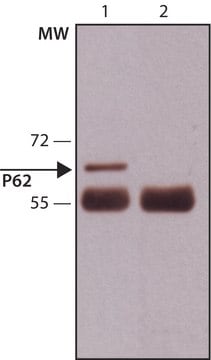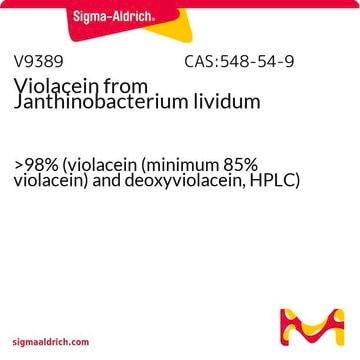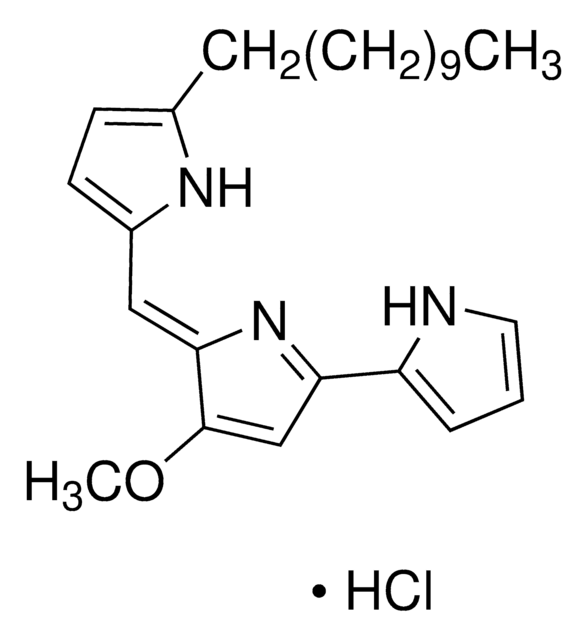P0103
Prodigiosin hydrochloride
from Serratia marcescens, ≥98% (HPLC), powder
Synonym(s):
2,2′-Bi-1H-Pyrrole,4-methoxy-5-[(5-methyl-4-pentyl-2H-pyrrol-2-ylidene)methyl, 2-Methyl-3-amyl-6-methoxyprodigiosene hydrochloride
About This Item
Recommended Products
biological source
Serratia marcescens
Quality Level
Assay
≥98% (HPLC)
form
powder
solubility
DMSO: soluble
H2O: insoluble
acetonitrile: soluble
chloroform: soluble
methanol: soluble
shipped in
wet ice
storage temp.
−20°C
General description
Biochem/physiol Actions
Storage Class Code
11 - Combustible Solids
WGK
WGK 3
Flash Point(F)
Not applicable
Flash Point(C)
Not applicable
Personal Protective Equipment
Certificates of Analysis (COA)
Search for Certificates of Analysis (COA) by entering the products Lot/Batch Number. Lot and Batch Numbers can be found on a product’s label following the words ‘Lot’ or ‘Batch’.
Already Own This Product?
Find documentation for the products that you have recently purchased in the Document Library.
Our team of scientists has experience in all areas of research including Life Science, Material Science, Chemical Synthesis, Chromatography, Analytical and many others.
Contact Technical Service








